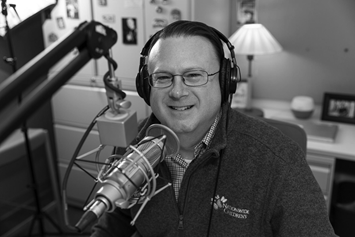Gynecomastia
Gynecomastia refers to enlarged breasts in males. This condition is common in teenagers, and often resolves on its own. However, if it persists for longer than 12 months, it may benefit from treatment.
What Is Gynecomastia?
Gynecomastia (gi ne co MAS tia) is excess growth of breast tissue in males. Usually, it is caused by an imbalance of estrogen and testosterone. This is known as physiologic gynecomastia. Although estrogen is considered to be a female hormone, it is also needed in males for healthy bone development. When the small amount of breast tissue normally present in boys is exposed to rising levels of estrogen (typical during early puberty) breast enlargement may occur.
Rarely, gynecomastia can be caused by an underlying health condition. This is known as pathological gynecomastia. Causes for pathological gynecomastia include:
- Certain medicines or other substances (such as marijuana)
- Diseases affecting hormones
- Tumors
- Chromosomal disorders
What Are the Signs and Symptoms of Gynecomastia?
Signs and symptoms of gynecomastia may include:
- Swollen breast gland tissue
- Breast tenderness
- Nipple discharge
- Swollen nipples
- Psychological or emotional concerns
How Common Is Gynecomastia?
Temporary breast enlargement often happens to adolescent boys. This is a time when there are hormonal changes. Over half of all males between 12 and 16 who are going through puberty have some form of gynecomastia in one or both breasts. It is usually a temporary condition that flattens out in a few months to a few years.
How Is Gynecomastia Treated?
- Physiologic Gynecomastia - Depending on how long the breast enlargement lasts, it may be best to follow up at 6 to 12 month intervals to see if it improves on its own. In 90 percent of teenage boys, gynecomastia goes away without treatment in 2 to 3 years.
- Pathological Gynecomastia - For the 10 percent who continue to have breast enlargement, surgical treatment may be considered if it does not go away on its own. Sometimes underlying conditions need to be treated. In these cases, the patient should be seen and treated by an endocrinologist.
Helping Hands Patient Education Materials
Written and illustrated by medical, nursing and allied health professionals at Nationwide Children's Hospital, Helping Hand instructions are intended as a supplement to verbal instructions provided by a medical professional. The information is periodically reviewed and revised to reflect our current practice. However, Nationwide Children's Hospital is not responsible for any consequences resulting from the use or misuse of the information in the Helping Hands.
HH-I-455 | ©2019, revised 11/19, Nationwide Children’s Hospital



